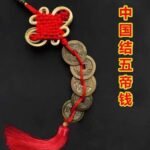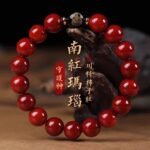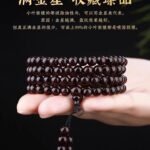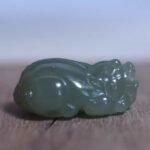When people think of gemstones, diamonds and sapphires usually come first. But jade—especially Hetian jade (和田玉) and Russian nephrite—has held a sacred place in human history for thousands of years. From ancient emperors to modern collectors, jade has always symbolized more than beauty. It is a bridge between nature, culture, and the human spirit.
1. Jade Is Not Just “One Stone”
Most people outside Asia think jade is a single gemstone. In fact, jade refers to two different minerals: nephrite and jadeite.
- Nephrite: Softer luster, warm and soothing, known for its toughness. This is what traditional Hetian jade and Russian nephrite belong to.
- Jadeite: Brighter, translucent, often green (like “imperial jade”). Popular in Myanmar jewelry.
👉 Related reading: Hetian Jade vs. Russian Nephrite – Which One Should You Collect?
👉 Fun fact: The famous saying in China “Gold has a value, jade is invaluable” refers to nephrite jade, not jadeite.
2. Why Jade Was the “Stone of Heaven”
In ancient China, jade was not just jewelry—it was philosophy carved in stone.
- Confucians praised jade for embodying virtue, purity, and benevolence.
- Daoists believed jade carried spiritual energy that could harmonize body and soul.
- Emperors used jade disks (bi) and scepters (ruyi) as symbols of divine authority.
👉 Learn more in our article: The Taoist Meaning of Jade: A Stone of Balance and Spirit
This is why you’ll often see jade buried with nobles—it was thought to protect the spirit in the afterlife.
3. Russian Nephrite: The Hidden Treasure of the North
Most Western readers know about Myanmar jadeite, but few know that Russian nephrite is considered one of the best green jades in the world.
- It comes from the Lake Baikal region, known for its deep green, almost glowing color.
- Unlike common green stones, Russian nephrite has a unique cat’s-eye effect when polished.
- Collectors prize it for its rarity and durability, calling it “the emerald of the north.”
👉 Explore our Russian nephrite collection
4. Jade in Modern Life: More Than an Heirloom
Today, jade is making a comeback—not just in China, but globally.
- Wellness culture: Jade rollers and gua sha tools are trendy in skincare.
- Fashion: Designers are reintroducing jade pendants as minimalist luxury.
- Mindfulness: Many wear jade bracelets as a reminder of balance and calm.
👉 Shop our Hetian jade pendants and jade bracelets
It’s fascinating to see how a stone once worn by emperors now finds its way into self-care routines.
5. How to Choose Jade That Speaks to You
If you’re new to jade, here are some tips:
- Look for texture: Fine, even, smooth.
- Observe color: Pure shades (white, green, yellow) often mean higher value.
- Feel the warmth: Real jade warms up when you hold it, unlike glass or plastic.
But most importantly—choose jade that resonates with you. In Chinese tradition, people don’t own jade—jade chooses its person.
✨ Takeaway: Jade is not just another gemstone. It is history, philosophy, and artistry carved into stone. Whether you choose a Hetian white jade pendant or a Russian nephrite bracelet, you are carrying a piece of human civilization with you.



